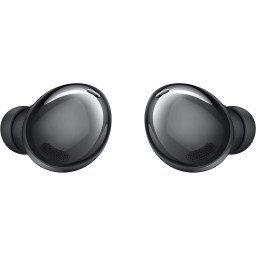Buying guide for Best Bluetooth earbuds
Bluetooth earbuds took the world by storm with the introduction of Apple’s AirPods. While these small wireless wonders existed before Apple’s entrée into the market, AirPods set the standard for what earbuds should offer. Since then, numerous brands have launched their own versions of Bluetooth-enabled earbuds at a range of price points.
Not surprisingly, audiophiles are very discerning about their sound equipment, and Bluetooth earbuds are no exception. Look, feel, fit, and performance are equally important for this everyday accessory. Because everyone’s ears and preferences are different, finding the perfect pair of Bluetooth earbuds can be a challenge.
How to buy the best Bluetooth earbuds
What makes Bluetooth earbuds different
What makes Bluetooth earbuds stand apart from WiFi and wired headphone alternatives? Ease of use is the primary reason for Bluetooth’s popularity. While WiFi can transmit higher-end audio, it’s more complicated to connect to and uses more power. Bluetooth devices pair almost seamlessly and use much less power, an important factor for any portable device.
Bluetooth technology was developed specifically for short-range wireless communication. Earbuds are a near-perfect match for Bluetooth because they are used within a few feet of the device that is transmitting audio or other data.
Why codecs matter
Codecs are the key to audio and video streamed via Bluetooth. Your favorite Apple Music or Spotify tracks couldn’t get to your earbuds if codecs didn’t exist. The term is a mashup of two words: compression and decompression, the two key functions needed to get audio data from one location to another.
Bluetooth earbuds use specific codecs to unpack audio files. The quality of that audio partly relies on the codecs that the Bluetooth chip is able to process, and not all earbuds use the same codecs. For example, AirPods use AAC exclusively. Other brands use a mix of codecs like SBC, aptX, aptX-HD, or LDAC. These particular codecs are known as “lossy” formats: they sacrifice some audio quality in order to deliver good, if not great, streaming sound to the earbuds.
- SBC: SBC is the baseline codec for any Bluetooth earbud that uses the A2DP standard and the most lossy, delivering audio at about 1/3 the quality of a compact disc.
- AAC: AAC is the license-free standard for audio codecs, used by Apple and YouTube for compression and decompression. AAC doesn’t work as well with devices that use the Android operating system.
- aptX: This is an advanced codec developed specifically for Bluetooth to deliver much higher quality audio than SBC, using a much more efficient, faster data rate. Even more efficient versions of aptX are rolling out regularly, including aptX-HD, aptX-LL, and aptX-Adaptive.
- LDAC: This codec, developed by Sony and added to the Android Open Source Project, can transfer up to three times the amount of data as SBC in the same timeframe.
New codecs are released each year, and keeping up with them can be a challenge. When in doubt, stick to the basics when considering Bluetooth earbuds. Codecs should be compatible with the devices you’ll be streaming from, and you should consider each model’s bit rate, which is the speed of file transfer. The higher the bit rate, the better.
Fit and feel
Bluetooth earbuds fit into the outer ear. Depending on the model, earbuds may have a fitted silicone cover that provides cushioning and can be removed and washed. Noise-canceling Bluetooth earbuds use silicone ear tips that fit further into the ear canal, sealing off outside noise so that listeners can hear just the audio.
All earbuds should fit snugly but comfortably in your ear. If standard earbuds fall out frequently even when you’re not moving around much, you may need a different earbud model – perhaps one with a silicone “wingtip” or one with a loop that fits around the earlobe. Noise-canceling earbuds often come with one or more extra pairs of ear tips in different sizes so you can customize the fit.
Battery life
Older Bluetooth earbud models had about three to five hours of playing time before needing a recharge. The latest Bluetooth earbuds can last 10 hours or more, depending on how you use them.
Are Bluetooth earbuds worth the cost?
For commuters and travelers, Bluetooth earbuds are a fantastic accessory. They’re lightweight, ultra-compact, and pack great audio quality (and often microphone capabilities) into small plastic buds. Athletes may like the wireless configuration even more – no more tangled headset cords to worry about while weightlifting or running.
To fit an earbud snugly in your ear canal, try gently tugging your earlobe upward while placing the earbud.
STAFF
BestReviews
Features to look for in Bluetooth earbuds
Secure charging case
Bluetooth earbuds should snap in or magnetically attach to their charging case so they don’t fall out.
Long-lasting battery
Battery life is an issue with earbuds. Look for Bluetooth earbuds that advertise at least six to 8 hours of listening time. Actual listening time will vary based on volume and bit rate.
Replaceable ear tips or covers
The silicone ear tips or covers do eventually wear out, so being able to replace them is essential.
Touch control
High-end Bluetooth earbuds feature touch control, which allows you to set the volume or answer a phone call with a set series of taps against the outer casing.
High bit rate
Bluetooth earbuds will sound better with codecs that can handle data at higher bit rates, over 300 kbps.
Comfortable fit
Uncomfortable earbuds will drastically shorten listening time as you’ll have to take them out to ease the pain.
Water resistance
If you plan to use Bluetooth earbuds while working out, they need to be able to handle a damp, sweaty environment.
DID YOU KNOW?
Bluetooth technology was named in honor of the 10th-century king Harald “Bluetooth” Gormsson, who united Scandinavia. The Bluetooth logo is a combination of two ancient runes making up Harald’s initials.
STAFF
BestReviews
Accessories for Bluetooth earbuds
Replacement ear tips
If the ear tips that come with your Bluetooth earbuds don’t fit well, grabbing a pack of ear tips in several different sizes may be the easiest solution.
Portable charger
Battery life is still an issue for Bluetooth earbuds, so having a small portable charger on hand during long trips is ideal for keeping the music going.
Earbud cleaning kit
Save time by grabbing a kit that includes all the items you need to thoroughly clean and disinfect earbuds, including cleaning fluid, a brush, and swabs.
How much do Bluetooth earbuds cost?
Inexpensive
The overall price of Bluetooth earbuds has dropped across the board, and for $35 to $85 you can find a decent pair with features like noise-canceling and even interchangeable ear tips.
Mid-range
Some excellent sound quality can be found in the $87 to $199 price range, as well as longer battery life and more ergonomic designs.
Expensive
You’ll find the highest-end and newest audio codecs like aptX in the $250 to $399 range, as well as premium features and the longest battery life.
If you have trouble cleaning debris from the earbud’s mesh speaker cover, try warming up a small piece of picture-hanging putty and pressing it against the mesh to grab any debris.
STAFF
BestReviews
Tips
- Stay close. For the best performance and sound quality, wear your Bluetooth earbuds within 10 meters of a paired device.
- Prevent hearing loss. Start a listening session with earbuds at a low volume and gradually raise the volume to a comfortable level.
- Clean earbuds frequently. Use a dry cotton swab and a soft-bristled brush (a new toothbrush, for example).
- Disinfect carefully. You can disinfect the outer surface of Bluetooth earbuds by dampening (not soaking) a cotton swab with isopropyl alcohol. Avoid touching the metal mesh of the earbud speaker.
- Check the return policy before you buy. If your Bluetooth earbuds disappoint in any way, a good return policy ensures you can swap them for a different model or brand.
FAQ
Q. Are Bluetooth earbuds safe?
A. Bluetooth earbuds, like many electronic devices, put out a very low amount of non-ionizing electromagnetic radiation (EMR). This is not the same radiation that is seen in X-rays, for example, which is ionizing radiation. The amount of EMR is also 10 to 400 times lower than the EMR put out by a cellphone. Because the EMR emitted by cellphones is very low in and of itself, the EMR emitted by Bluetooth earbuds is negligible and won’t hurt you.
Q. Do Bluetooth earbuds damage your hearing?
A. According to the Cleveland Clinic, length of time and loudness are two key factors that affect long-term hearing loss. They recommend that earbud users limit their listening to 90 minutes at 80% volume.
Q. How long do Bluetooth earbuds last?
A. Depending on how often you use the earbuds, they can last for up to 1,000 recharges or about one to two years with medium to heavy use. To increase the lifespan of Bluetooth earbuds, try not to drain the batteries completely all the time. Instead, charge them before they drop beneath 20%. Listening at a moderate volume can extend their performance to an extra year or two.
Q. How can I keep Bluetooth earbuds from falling out of my ears?
A. While everyone’s ears are different, earbuds are built to a standard size of about 2.5 millimeters, which fits most adult ear canals. Always make sure you’re putting the earbuds in the correct ear – look for the L and R on each earbud. If the earbuds have ear tips, try out different tip sizes and go with the most snug and comfortable fit. Finally, if you see a lot of earwax on your earbuds after taking them out, head to an ear, nose, and throat doctor to check for impacted wax, which can cause earbud fit issues.



















